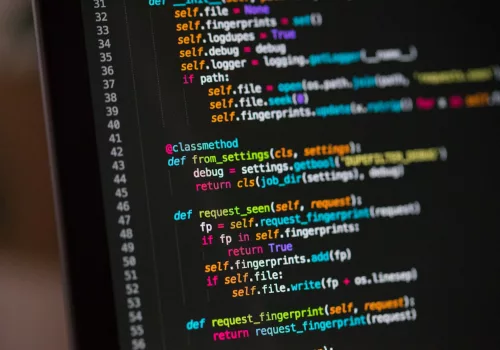In the corporate world, few titles carry as much weight and prestige as Chief Executive Officer (CEO) and President. These roles are critical to the success of any organization, but the responsibilities, scope of influence, and leadership dynamics between the two can be nuanced and complex. While many people assume these titles are interchangeable, particularly in smaller companies, their functions and focus areas can differ significantly, especially in larger organizations with more intricate structures.
Understanding the difference between a CEO and a President is crucial for anyone involved in corporate management, whether as a business owner, board member, or aspiring executive. In this article, we’ll dive deep into the distinctions between these roles, exploring their unique responsibilities, how they complement each other, and how they fit into the broader corporate structure.
1. The Role of the CEO: The Strategic Visionary
The Chief Executive Officer (CEO) is the highest-ranking executive in an organization and is often seen as the person responsible for defining the company’s overall direction. CEOs are entrusted with shaping the long-term vision and goals of the business, ensuring that every part of the organization is aligned with this vision. While the specific duties of a CEO can vary depending on the size and structure of the company, the CEO’s main task is to act as the strategic leader of the organization.
Key Responsibilities of the CEO:
- Long-Term Strategic Planning: One of the primary roles of a CEO is to develop and articulate the company’s long-term strategy. This includes setting the vision for the company and identifying new growth opportunities, markets, and innovations that can ensure its sustainability and success. The CEO must assess industry trends, anticipate future challenges, and make strategic decisions to navigate through these complexities.
- Leadership and Management of C-Suite Executives: The CEO is responsible for overseeing the entire executive management team, which typically includes key figures such as the CFO (Chief Financial Officer), COO (Chief Operating Officer), CTO (Chief Technology Officer), CMO (Chief Marketing Officer), and more. Each of these leaders manages critical business functions, and the CEO must ensure they are aligned with the company’s broader goals. The CEO holds ultimate responsibility for the performance of the senior leadership team and provides direction to help them execute their respective duties.
- Engagement with the Board of Directors: In most organizations, the CEO reports directly to the Board of Directors, a group of individuals who represent the shareholders and hold the CEO accountable. The CEO must regularly communicate the company’s performance, strategic initiatives, financial outlook, and any significant challenges to the board. This role involves balancing the board’s interests and the company’s needs, while also ensuring that the board is involved in major strategic decisions.
- Public Representation and External Relations: CEOs are often the public face of the company, representing it at industry events, shareholder meetings, and media interviews. They play a key role in building and maintaining relationships with investors, regulators, partners, and stakeholders. For large public companies, this often involves overseeing investor relations and ensuring that shareholders are informed of the company’s strategies and financial performance.
- Corporate Culture and Organizational Values: While the day-to-day culture of an organization is often shaped by management at various levels, the CEO sets the tone at the top. A successful CEO must embody the organization’s values and lead by example. Whether it’s fostering innovation, emphasizing ethical behavior, or championing inclusivity, the CEO’s behavior and decisions heavily influence corporate culture.
Focus of the CEO:
The CEO is primarily focused on long-term goals and the company’s strategic future. CEOs must balance immediate business pressures with broader visions for growth, innovation, and sustainability. Their role is to ensure the company is always on a trajectory toward its overarching mission and that it remains competitive in a constantly evolving market landscape.
2. The Role of the President: The Operational Leader
The President of a company typically holds the second-highest position within an organization and is primarily responsible for overseeing the company’s day-to-day operations. While the CEO focuses on long-term strategy, the President is tasked with ensuring that the company meets its short-term goals and that all departments are functioning efficiently. In many organizations, the President acts as the chief operational officer, ensuring that the business runs smoothly.
Key Responsibilities of the President:
- Operational Management: The President is directly responsible for overseeing the company’s daily operations. This involves managing the heads of various departments (such as sales, marketing, production, human resources, etc.) and ensuring that they are effectively executing the company’s strategy. While the CEO may set the vision, the President makes sure that everything from product development to customer service is aligned and executed properly.
- Implementing Strategy: While the CEO is focused on the long-term trajectory of the business, the President ensures that the company’s day-to-day activities support these larger goals. This includes translating the CEO’s strategic vision into actionable tasks and ensuring that every department works toward meeting short-term objectives. For example, if the CEO sets a goal to expand into a new market, the President would be responsible for coordinating the resources and personnel to make that expansion a reality.
- Budget Management and Resource Allocation: The President plays a critical role in managing the company’s budget and ensuring that resources are appropriately allocated across departments. This includes overseeing financial performance, managing expenses, and making key operational decisions that affect the company’s profitability. The President must have a strong understanding of how to optimize processes and resources to achieve maximum efficiency and effectiveness.
- Internal Leadership and Employee Engagement: While the CEO often engages with external stakeholders, the President is focused on internal leadership. This includes motivating employees, fostering collaboration across teams, and addressing any operational challenges that arise. The President often plays a significant role in shaping corporate culture and ensuring that the company’s values are upheld across all levels of the organization.
- Performance Monitoring and Accountability: The President is responsible for monitoring the company’s performance against its operational targets, such as revenue growth, market share, and productivity. They must regularly review performance metrics and adjust strategies as needed to ensure the company stays on course. The President may also be tasked with addressing underperforming departments and leading turnaround efforts if necessary.
Focus of the President:
The President’s focus is on execution and operational efficiency. While the CEO is thinking about the next five or ten years, the President is thinking about how to make the company’s goals a reality within the next quarter or year. Presidents ensure that the company’s operations are running smoothly, efficiently, and profitably in the short term.
3. How the CEO and President Work Together
In companies where both the CEO and President roles exist, their collaboration is essential for the company’s success. The relationship between the CEO and President must be based on trust and open communication, as both roles are critical to the company’s overall performance.
Key Areas of Collaboration:
- Strategic Alignment: The CEO and President must work together to ensure that the company’s long-term strategy and short-term operational goals are aligned. For example, if the CEO envisions international expansion, the President must devise a plan to operationalize that vision—such as ensuring that the right resources, talent, and logistics are in place to support the expansion.
- Communication with the Board: While the CEO reports directly to the Board of Directors, the President is often involved in providing operational updates and insights. Both roles may work together to prepare presentations and reports for the board, ensuring that the company’s financial performance, strategy, and operational execution are communicated clearly and effectively.
- Corporate Culture: While the CEO sets the company’s culture and values, the President is often responsible for ensuring these values are upheld in everyday operations. This involves working with department heads and employees to build a cohesive culture that aligns with the company’s mission and vision.
- Crisis Management: In times of crisis, the CEO and President must collaborate closely to address challenges and steer the company through difficult situations. The CEO may take the lead in communicating with external stakeholders, while the President focuses on stabilizing internal operations and keeping the company on track.
4. CEO vs. President: A Comparison
| Aspect | CEO | President |
|---|---|---|
| Primary Role | Long-term strategy and vision | Operational management and execution |
| Reports To | Board of Directors | CEO or Board of Directors |
| Focus | Big-picture strategy | Day-to-day operations and short-term goals |
| External Relations | Public face of the company, deals with investors and stakeholders | Primarily focused on internal matters |
| Decision-Making | Final decision-maker on major issues | Advises on and implements operational decisions |
| Leadership Style | Visionary and strategic | Tactical and execution-oriented |
5. When the CEO and President Roles Overlap
In some companies, especially smaller businesses and startups, the roles of CEO and President are often combined into one position. This means that one individual is responsible for both the strategic direction and the day-to-day management of the company. This can be an effective structure in smaller organizations, where the business’s scale and complexity do not require a separate executive for operations.
As companies grow, however, they often split these roles to allow the CEO to focus on the long-term vision and strategy while delegating the operational management to the President or COO (Chief Operating Officer). This division of labor allows the CEO to concentrate on external factors, such as industry trends and investor relations, while the President handles internal operations.
Conclusion
The roles of CEO and President are both vital to a company’s success, but they operate at different levels within the organization. The CEO is responsible for steering the ship, setting the long-term course, and ensuring the company’s success in the broader marketplace. Meanwhile, the President ensures that the ship runs smoothly on a daily basis, overseeing operations, managing short-term goals, and making sure that the CEO’s vision becomes a reality.
Together, these roles create a balance between strategic foresight and operational efficiency, ensuring that companies can both grow sustainably over time and meet their immediate goals. Whether the roles are separated or combined, understanding the difference between the CEO and President is essential for navigating corporate leadership and ensuring a well-functioning organization.






